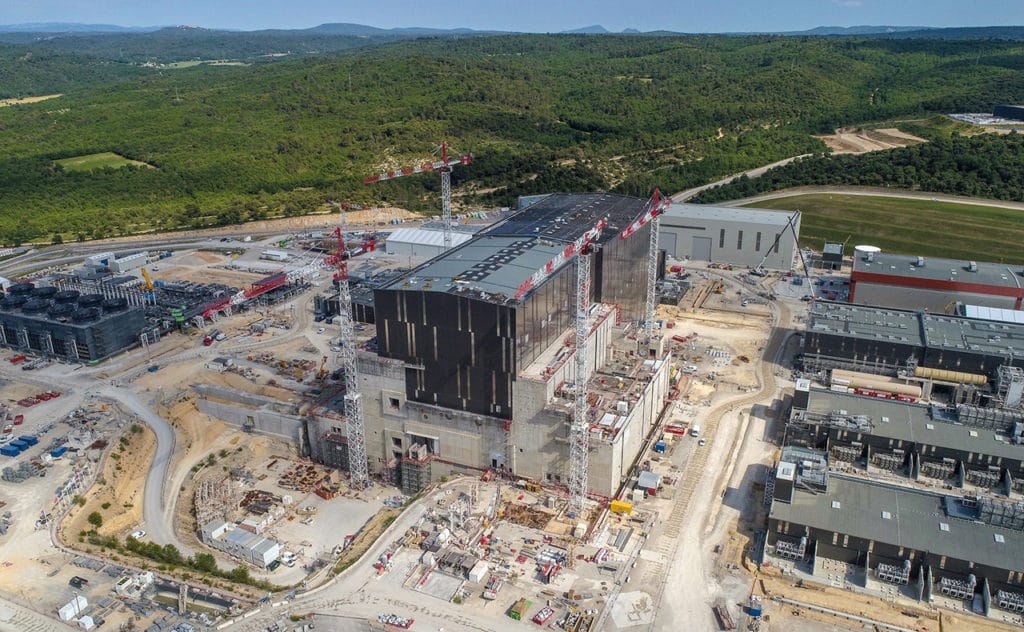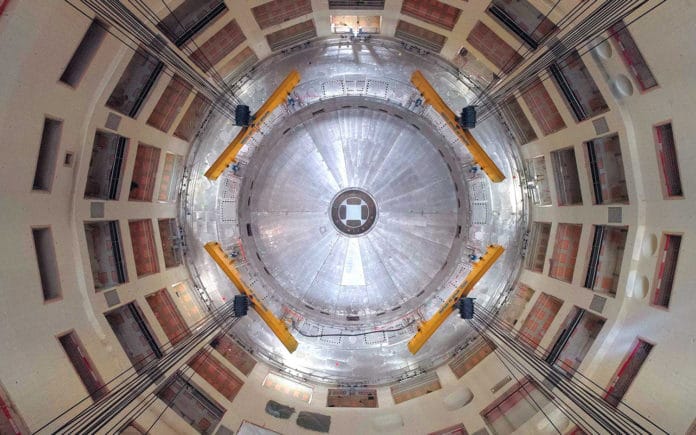In France, the assembly of the ITER (International Thermonuclear Experimental Reactor), which will be the world’s largest magnetic confinement plasma physics experiment, has started on July 28, 2020. The largest nuclear fusion reactor to date begins construction next to the Cadarache facility in Saint-Paul-lès-Durance, in Provence, southern France.
The ITER is an experimental tokamak nuclear fusion reactor designed to prove the feasibility of fusion as a large-scale and carbon-free source of energy based on the same principle that powers our Sun and stars. It has been in the works since 1985, and 35 countries are participating in the project directly or indirectly.
The ITER Members – China, the European Union, India, Japan, Korea, Russia, and the United States – are now engaged in a 35-year collaboration to build and operate the ITER experimental device, and together bring fusion to the point where a demonstration fusion reactor can be designed.

The heart of the world’s largest tokamak is its doughnut-shaped vacuum chamber. Inside, under the influence of extreme heat and pressure, gaseous hydrogen fuel becomes a plasma – the very environment in which hydrogen atoms can be brought to fuse and yield energy. The charged particles of the plasma can be shaped and controlled by the massive magnetic coils placed around the vessel. Physicists use this important property to confine the hot plasma away from the vessel walls.
Inside a tokamak, the energy produced through the fusion of atoms is absorbed as heat in the walls of the vessel. Just like a conventional power plant, a fusion power plant will use this heat to produce steam and then electricity by way of turbines and generators. If it is controlled, hydrogen fusion would be a safe and clean source of energy, making it possible to do away with fossil fuels.
The world record for fusion power is held by the European tokamak JET. In 1997, JET produced 16 MW of fusion power from a total input heating power of 24 MW. ITER thermonuclear fusion reactor has been designed to create a plasma of 500 megawatts (thermal) for around twenty minutes while 50 megawatts of thermal power are injected into the tokamak, resulting in a ten-fold gain of plasma heating power.
ITER could produce its first plasma at the end of 2025-beginning of 2026, and the reactor could reach full power in 2035. The ITER site, one of the largest in Europe, covers nearly 42 hectares and has mobilized 2,300 workers since its inception in 2010. The total price of construction and operations is expected to be in excess of €20 billion.
